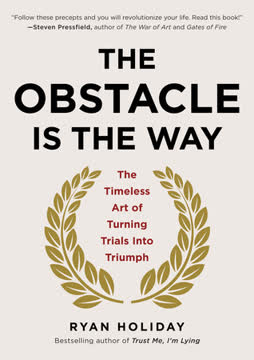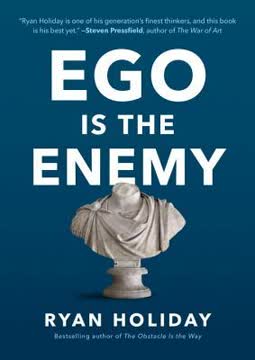نکات کلیدی
1. قیمتها دانش و منابع را بدون برنامهریزی مرکزی هماهنگ میکنند
قیمتها مانند فرومونهای کلونی مورچههای انسانی هستند که ما آن را اقتصاد مینامیم، سیگنالهایی که همه چیز را به هم متصل میکنند، تاندونهای دست نامرئی.
سیستم قیمتگذاری بسیار هوشمندانه است. این سیستم امکان هماهنگی حجم زیادی از دانش و منابع پراکنده را بدون نیاز به برنامهریز مرکزی فراهم میکند. وقتی تقاضا برای یک محصول افزایش مییابد، قیمت آن بالا میرود و به تولیدکنندگان علامت میدهد که بیشتر تولید کنند و به مصرفکنندگان که کمتر مصرف کنند. این فرآیند منابع را به کاربریهای با ارزشتر تخصیص میدهد.
قیمتها اطلاعات حیاتی را منتقل میکنند:
- کمبود نسبی کالاها
- ترجیحات مصرفکننده
- هزینههای تولید
- فرصتهای سود
"دست نامرئی" از اقدامات فردی پدیدار میشود. هرچند هر فرد به نفع خود عمل میکند، سیستم قیمتگذاری این اقدامات را به نفع جامعه به طور کلی هدایت میکند. این "نظم خودجوش" امکان هماهنگی اقتصادی پیچیده را بدون کنترل از بالا به پایین فراهم میکند.
2. نوآوری و کارآفرینی رشد و رفاه اقتصادی را به پیش میبرند
سودها دیوید کورنفلد را به خلق آن لذت و شادی و قدردانی انسانی سوق دادند. نه نیتهای خوب او. نه تفکر درونی او، که بنشیند و فکر کند که چگونه میتواند دنیا را به جای بهتری تبدیل کند.
کارآفرینان حلکنندگان مشکلات هستند. آنها نیازهای برآورده نشده در جامعه را شناسایی کرده و محصولات، خدمات یا فرآیندهای جدیدی برای پاسخ به آنها توسعه میدهند. این نوآوری با پتانسیل سود هدایت میشود که به عنوان انگیزهای قوی برای پذیرش ریسک و سرمایهگذاری زمان و منابع عمل میکند.
تأثیر نوآوری گسترده است:
- بهبود محصولات و خدمات
- افزایش بهرهوری
- صنایع و فرصتهای شغلی جدید
- استانداردهای زندگی بالاتر
نوآوری یک فرآیند مداوم است. با ظهور راهحلهای جدید، اغلب چالشها یا فرصتهای جدیدی ایجاد میشود که نوآوری بیشتر را تحریک میکند. این چرخه تخریب خلاقانه یک عامل کلیدی در رشد اقتصادی بلندمدت و پیشرفت اجتماعی است.
3. آزادی و رقابت خلاقیت و حل مسئله را تقویت میکنند
ما رویا میبینیم و آنها نمیبینند. ما تصور میکنیم. ما به آینده نگاه میکنیم به گونهای که به ما اجازه میدهد برنامهریزی کنیم. ما پسانداز میکنیم. ما سرمایهگذاری میکنیم. ما امروز از لذت صرفنظر میکنیم برای چیزی بزرگتر فردا و میفهمیم چرا این کار را میکنیم.
نبوغ انسانی در جوامع آزاد شکوفا میشود. وقتی افراد آزادی دنبال کردن منافع و ایدههای خود را دارند، این منجر به مجموعهای متنوع از رویکردها برای حل مشکلات میشود. رقابت در بازار تضمین میکند که بهترین راهحلها به اوج میرسند.
عناصر کلیدی یک اقتصاد آزاد:
- حقوق مالکیت
- حاکمیت قانون
- مبادله داوطلبانه
- موانع کم برای ورود
آزادی امکان آزمون و خطا را فراهم میکند. هر نوآوری یا کسبوکار موفق نمیشود، اما آزادی برای آزمایش و احتمالاً شکست برای پیشرفت ضروری است. جوامعی که شکست را مجازات میکنند یا فعالیت اقتصادی را بیش از حد محدود میکنند، خلاقیت و رشد را خفه میکنند.
4. پیشرفت اقتصادی به نفع جامعه به طور کلی است، نه فقط ثروتمندان
به آنچه در نیمه دوم قرن بیستم اتفاق افتاد نگاه کنید وقتی که زنان بیشتری خواستند کار کنند. آیا آنها صندلیهایی را که قبلاً به دیگران تعلق داشتند گرفتند؟ نه. آنها صندلیهای خود را با خود آوردند.
افزایش بهرهوری فرصتهای جدیدی ایجاد میکند. با افزایش کارایی در یک بخش، منابع و نیروی کار برای صنایع و خدمات جدید آزاد میشود. این فرآیند کیک اقتصادی کلی را گسترش میدهد به جای اینکه فقط منابع ثابت را بازتوزیع کند.
شواهد تاریخی از پیشرفت گسترده:
- افزایش امید به زندگی
- نرخهای بالاتر سواد
- دسترسی بیشتر به آموزش
- بهبود استانداردهای زندگی در سطوح درآمدی مختلف
فناوری و نوآوری به نفع مصرفکنندگان است. در حالی که نوآوران ممکن است در ابتدا سودهای زیادی کسب کنند، رقابت در نهایت قیمتها را پایین میآورد و محصولات و خدمات جدید را به طور گسترده در دسترس قرار میدهد. این فرآیند به طور چشمگیری کیفیت زندگی را برای افراد در تمام سطوح درآمدی در طول زمان بهبود بخشیده است.
5. درک اقتصاد به پیمایش مسائل اجتماعی پیچیده کمک میکند
اقتصاد درباره چگونگی بهرهبرداری بیشتر از زندگی است.
تفکر اقتصادی ابزارهای ارزشمندی ارائه میدهد. درک مفاهیمی مانند مبادله، انگیزهها و پیامدهای ناخواسته میتواند به راهحلهای مؤثرتری برای مشکلات اجتماعی منجر شود. این به سیاستگذاران و شهروندان کمک میکند تا تصمیمات آگاهانهتری بگیرند.
مفاهیم اقتصادی کلیدی برای مسائل اجتماعی:
- هزینه فرصت
- تحلیل حاشیهای
- مزیت نسبی
- پیامدهای خارجی
اقتصاد ارتباطات پنهان را آشکار میکند. بسیاری از مسائل اجتماعی ریشهها یا پیامدهای اقتصادی دارند که ممکن است بلافاصله آشکار نباشند. تحلیل اقتصادی میتواند این روابط را کشف کند و رویکردهای جدیدی برای مقابله با چالشهای پیچیده پیشنهاد دهد.
6. رویاهای شخصی و پیشرفت اجتماعی به هم پیوستهاند
چه کسی بافنده رویاهاست؟ چه کسی اطمینان میدهد که همه رویاها میتوانند به طور مسالمتآمیز همزیستی کنند؟ چه کسی همه برنامهها را به هم میبافد تا اطمینان حاصل کند که آنها به موازات هم کار میکنند و نه در تضاد؟
آرزوهای فردی پیشرفت جمعی را به پیش میبرند. وقتی افراد اهداف و رویاهای شخصی خود را دنبال میکنند، اغلب به نوآوریها و بهبودهایی منجر میشود که به نفع جامعه به طور کلی است. سیستم بازار به هماهنگی این آرزوهای متنوع کمک میکند.
نمونههایی از رویاهای شخصی با تأثیر اجتماعی:
- کارآفرینان که محصولات جدید ایجاد میکنند
- دانشمندان که به دنبال پیشرفتهای پزشکی هستند
- هنرمندانی که تغییرات فرهنگی را الهام میبخشند
- معلمانی که نسلهای آینده را شکل میدهند
"بافت رویاها" خودسازمانده است. هیچ برنامهریز مرکزی برای هماهنگی همه فعالیتهای انسانی وجود ندارد، اما از طریق سیستم قیمتگذاری و مبادله داوطلبانه، میلیاردها برنامه فردی به یک کل هماهنگ بافته میشوند.
7. آموزش و فرصت میتوانند زندگیها و ملتها را متحول کنند
شما با آنچه که میشوید به والدین خود افتخار میکنید.
دانش یک کاتالیزور قدرتمند است. آموزش افراد را با مهارتها و درک لازم برای دنبال کردن آرزوهایشان و مشارکت در جامعه مجهز میکند. این میتواند چرخههای فقر را بشکند و درهای جدیدی به روی فرصتها باز کند.
قدرت تحولآفرین آموزش:
- افزایش پتانسیل درآمد
- تحرک اجتماعی بیشتر
- بهبود مهارتهای حل مسئله
- مشارکت مدنی بیشتر
ملتها از جمعیت تحصیلکرده بهرهمند میشوند. کشورهایی که در آموزش سرمایهگذاری میکنند و فرصتهایی برای شهروندان خود ایجاد میکنند، تمایل به تجربه رشد اقتصادی بیشتر، نوآوری و پیشرفت اجتماعی دارند. این میتواند حتی در شرایط چالشبرانگیز به تغییرات مثبت منجر شود، همانطور که تأثیر بالقوه رامون بر آینده کوبا نشان میدهد.
آخرین بهروزرسانی::
FAQ
What is "The Price of Everything" by Russell Roberts about?
- Economic Parable: The book is a parable that explores how prices, markets, and spontaneous order shape prosperity and possibility in society.
- Story-Driven Approach: It follows the intertwined stories of Ramon Fernandez, a star athlete and Cuban immigrant, and Ruth Lieber, a wise economics professor, set against the backdrop of Stanford University.
- Core Economic Concepts: Through narrative, it explains fundamental economic ideas such as emergent order, the role of prices, specialization, and the distribution of knowledge.
- Real-World Relevance: The book uses relatable events—like a protest against a corporation and the aftermath of a natural disaster—to illustrate how economic principles play out in everyday life.
Why should I read "The Price of Everything" by Russell Roberts?
- Accessible Economics: The book makes complex economic concepts understandable through engaging storytelling rather than dry theory.
- Practical Insights: It offers a fresh perspective on how markets work, why prices matter, and how prosperity is created and distributed.
- Thought-Provoking Questions: Readers are challenged to reconsider common assumptions about fairness, justice, and the role of government in the economy.
- Broad Appeal: Whether you’re a student, a professional, or simply curious about economics, the book provides valuable lessons applicable to real-world issues.
What are the key takeaways from "The Price of Everything" by Russell Roberts?
- Prices as Signals: Prices coordinate the actions of millions without central direction, using dispersed knowledge to allocate resources efficiently.
- Emergent Order: Order and harmony in markets arise spontaneously from individual actions, not from top-down planning.
- Specialization and Knowledge: No one person knows how to make even a simple pencil; specialization and trade allow society to achieve the impossible.
- Limits of Regulation: Attempts to control prices or markets often lead to unintended consequences, such as shortages or inefficiency.
- Prosperity and Progress: Economic growth and rising living standards are driven by innovation, competition, and the freedom to pursue dreams.
How does "The Price of Everything" by Russell Roberts explain the concept of emergent order?
- Spontaneous Organization: The book uses examples like ant colonies, flocks of birds, and the making of a pencil to show how complex order can arise without a central planner.
- Market Analogy: Markets are compared to these natural systems, where individual actions, guided by prices, create coordinated outcomes.
- No Central Authority: There is no “pencil czar” or “market czar”—order emerges from countless decentralized decisions.
- Everyday Examples: The narrative highlights how things like traffic patterns, language evolution, and product availability are emergent phenomena.
What role do prices play in "The Price of Everything" by Russell Roberts?
- Information Transmission: Prices convey information about scarcity, demand, and value, allowing buyers and sellers to make informed decisions.
- Resource Allocation: They steer resources to where they are most valued, ensuring that goods and services are produced and consumed efficiently.
- Incentive Mechanism: Prices motivate innovation, risk-taking, and the search for better ways to meet human needs.
- Social Coordination: By adjusting to changes in supply and demand, prices help society adapt to shocks and new opportunities without chaos.
How does "The Price of Everything" by Russell Roberts address the fairness of markets and prices?
- Perceived Injustice: The book acknowledges that market outcomes can seem unfair, especially when prices rise during emergencies or when some people are left out.
- Knowledge Problem: It argues that no one has enough information to allocate resources more fairly than the market does through prices.
- Trade-Offs: Attempts to enforce fairness, such as price controls, often lead to shortages and unintended harm to those they aim to help.
- Compassion and Community: The narrative suggests that while markets are not perfect, they can be complemented by personal acts of kindness and community support.
What is the significance of the "pencil story" in "The Price of Everything" by Russell Roberts?
- Illustrates Specialization: The story demonstrates that no single person knows how to make a pencil; it requires the cooperation of thousands worldwide.
- Dispersed Knowledge: It highlights how knowledge is spread across many people, each specializing in a small part of the process.
- Market Coordination: The pencil’s existence is made possible by the price system, which coordinates these dispersed efforts without central direction.
- Everyday Miracles: The pencil becomes a symbol of the “silent music” of the market, showing the hidden complexity behind ordinary goods.
How does "The Price of Everything" by Russell Roberts compare market order to natural systems?
- Ant Colonies and Bird Flocks: The book draws parallels between the self-organization of animal groups and the spontaneous order of markets.
- No Central Planner: Just as no ant or bird is in charge, no one person directs the market; order emerges from simple rules and local interactions.
- Feedback Mechanisms: Both systems rely on feedback—pheromones in ants, prices in markets—to adapt and respond to change.
- Limits of Human Design: The narrative suggests that human attempts to improve on these systems often fail due to complexity and lack of information.
What does "The Price of Everything" by Russell Roberts say about innovation and economic growth?
- Incentives for Innovation: The book explains that profits and prices create incentives for entrepreneurs to discover better ways of doing things.
- Diffusion of Benefits: While innovators may profit initially, competition ensures that most benefits of innovation are passed on to consumers through lower prices and better products.
- Historical Perspective: It provides examples of how living standards have improved dramatically over the past century due to innovation and productivity gains.
- Role of Freedom: Economic growth flourishes in societies that allow freedom to innovate, compete, and take risks.
How does "The Price of Everything" by Russell Roberts address the impact of markets on inequality and poverty?
- Rising Living Standards: The book argues that the poor today are far better off than in the past, with access to goods and services once reserved for the wealthy.
- Relative vs. Absolute Poverty: It emphasizes the importance of focusing on improving the absolute well-being of the poor, not just reducing inequality.
- Mobility and Opportunity: The narrative highlights the opportunities for advancement in open, competitive economies.
- Policy Implications: It cautions against policies that may reduce inequality but also stifle growth and opportunity for the least well-off.
What are the best quotes from "The Price of Everything" by Russell Roberts and what do they mean?
- “No one can make a pencil.” – Emphasizes the complexity of even simple products and the power of specialization and market coordination.
- “Prices are the pheromones of the human ant colony we call an economy.” – Illustrates how prices guide human behavior in markets, similar to how pheromones guide ants.
- “The curious task of economics is to demonstrate to men how little they really know about what they imagine they can design.” – A Hayek quote, underscoring the limits of human knowledge in managing complex systems.
- “Economics is about how to get the most out of life.” – Reminds readers that economics is not just about money, but about making choices to improve well-being.
What practical advice or methods does "The Price of Everything" by Russell Roberts offer for understanding economics and making better decisions?
- Pay Attention to Trade-Offs: Always consider the costs and benefits, both seen and unseen, when making choices.
- Appreciate Emergent Order: Recognize that many social and economic outcomes are the result of decentralized, spontaneous processes rather than top-down design.
- Be Skeptical of Quick Fixes: Understand that interventions in markets often have unintended consequences due to complexity and dispersed knowledge.
- Value Freedom and Innovation: Support policies and institutions that encourage experimentation, competition, and the free flow of information.
- Seek Deeper Understanding: Use everyday examples—like pencils, traffic, or language—to explore and appreciate the hidden order in the world around you.
نقد و بررسی
کتاب قیمت همهچیز نقدهای متفاوتی دریافت کرده است، بسیاری از خوانندگان رویکرد قابلفهم آن در آموزش اصول اقتصادی از طریق یک روایت داستانی را تحسین میکنند. خوانندگان توضیحات رابرتز درباره مفاهیمی مانند قیمتگذاری، بازارها و نظم خودجوش را میپسندند. برخی داستان را جذاب و تفکر برانگیز میدانند، در حالی که دیگران آن را آموزشی و فاقد توسعه شخصیتها میدانند. منتقدان به گرایشهای لیبرترین و استدلالهای سادهانگارانه کتاب اشاره میکنند. بهطور کلی، این کتاب برای کسانی که به یادگیری اصول اولیه اقتصاد علاقهمندند توصیه میشود، اگرچه برخی قالب داستانی را کمتر مؤثر از یک مقاله مستقیم میدانند.
Similar Books














